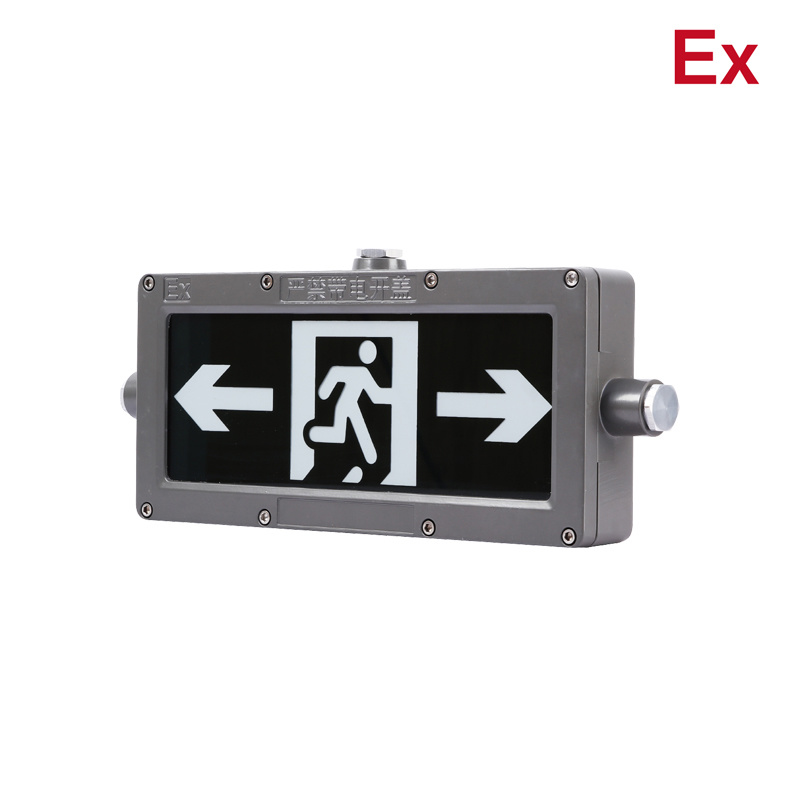Comprehensive Guide to Explosion-Proof Emergency Lighting
Release time:
2025-01-06
Do you have any idea about the selection of the explosion-proof lighting fixtures for various hazardous environments. This guide explores the details of explosion-proof light and offers practical insights for choosing the right product to meet your needs.

In hazardous environments, lighting fixtures must meet stringent safety requirements to prevent explosions caused by arcs, sparks, or high temperatures. Explosion-proof emergency lighting not only ensures safety during normal operation but also provides reliable illumination in emergencies. This article details explosion-proof ratings, application scenarios, and the features of JINYI's explosion-proof emergency lighting solutions.
1. Understanding Explosion-Proof Ratings
Explosion-proof ratings are standardized codes indicating the safety and suitability of equipment in hazardous environments. Below are the common ratings and their meanings:
(1) Gas Explosion-Proof Rating (Ex eb ib mb IIC T6 Gb)
- Ex: Indicates explosion-proof equipment.
- eb/ib/mb: Internal protection methods:
- - eb: Increased safety, preventing ignition sources under normal and fault conditions.
- - ib: Intrinsic safety, limiting electrical energy below ignition thresholds.
- - mb: Encapsulation, isolating ignition sources from the external environment.
- IIC: Suitable for the most dangerous gases, such as hydrogen and acetylene.
- T6: Maximum surface temperature of 85°C, ideal for low ignition temperature environments.
- Gb: Suitable for Zone 1 and Zone 2 gas hazardous areas.
(2) Dust Explosion-Proof Rating (Ex tb IIIC T80℃ Db)
- tb: Dust protection by enclosure, preventing dust ingress.
- IIIC: Designed for environments with conductive dust.
- T80℃: Maximum surface temperature of 80°C, suitable for low ignition temperature dust environments.
- Db: Applicable to Zone 21 and Zone 22 dust hazardous areas.
2. Classification of Hazardous Areas
Explosion-proof lighting is chosen based on the classification of hazardous zones:
- Zone 0: Explosive gas mixtures are continuously present (>1000 hours/year), e.g., inside gas storage tanks.
- Zone 1: Explosive gas mixtures occur occasionally (10–1000 hours/year), e.g., near chemical plant equipment.
- Zone 2: Explosive gas mixtures are unlikely but may occur during abnormal conditions (<10 hours/year).
- Zone 20/21/22: For dust environments, Zone 20 indicates continuous dust presence, while Zone 22 indicates infrequent dust presence.
3. Types and Features of Explosion-Proof Emergency Lighting
Based on application scenarios and functionality, explosion-proof emergency lighting is categorized as follows:
(1)Explosion-Proof Exit Signs
- Features: Clearly indicate escape routes with high-brightness LEDs for long-lasting visibility.
- Applications: Ideal for Zone 1/Zone 21 environments to mark safe exits.
(2) Explosion-Proof Twinspot Lights
- Features: Dual independent light sources provide wide illumination coverage.
- Applications: Suitable for high-visibility zones in Zone 1/Zone 21 environments, such as warehouses and corridors.
(3) Explosion-Proof LED Battens
- Features: Linear LED fixtures with options for LED boards or tubes, offering uniform lighting with low energy consumption.
- Applications: Designed for Zone 2/Zone 22 environments in industrial facilities and storage areas.
4. JINYI's Explosion-Proof Emergency Lighting Solutions
JINYI offers a wide range of explosion-proof emergency lighting products tailored to diverse needs:
(1) Explosion-Proof Exit Signs
- Certification: Ex eb ib mb IIC T6 Gb; Ex tb IIIC T80℃ Db.
- Features: High-brightness LED light sources with automatic emergency functionality for clear evacuation guidance.
- Applications: Petrochemical plants, mining sites, and hazardous goods storage areas.
(2) Explosion-Proof Twinspot Lights
- Certification: Ex eb ib mb IIC T6 Gb; Ex tb IIIC T80℃ Db.
- Features: Dual light sources ensure broad coverage and reliable illumination during emergencies.
- Applications: Emergency pathways and equipment maintenance zones.
(3) Explosion-Proof LED Battens
- Certification: Ex db IIC T6 Gb; Ex tb IIIC T80℃ Db.
- Features: Versatile installation options (wall-mounted, suspended), compatible with LED boards and tubes.
- Applications: Industrial facilities, large warehouses, and dust-prone environments.
5. Advantages of Explosion-Proof Emergency Lighting
- Enhanced Safety: Designed to meet strict explosion-proof standards, ensuring the safety of personnel and assets in hazardous areas.
- Energy Efficiency: Equipped with advanced LED technology, reducing energy consumption and operational costs.
- Custom Solutions: Tailored designs to fit diverse applications and specific client needs.
JINYI is committed to providing high-quality explosion-proof emergency lighting solutions that meet international standards and diverse client requirements. For more information, visit our website: www.jyemergency.com.
JINYI: Ensuring Safety and Illumination in Hazardous Environments.
Recommend News
2025-09-30
JINYI(GUANGDONG CHINA)LIGHTING CO.,LTD
Add:
No. 1, Futing Street, Banfu Town, Zhongshan Science and Technology Park, Bld. 3, Plot 3, Zhongshan, Guangdong, China 528459
Tel:
Tel:
Fax:
Mail:







